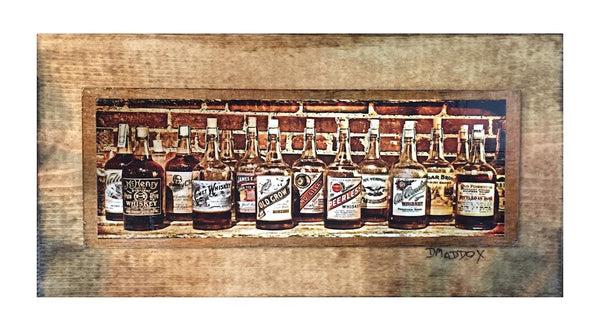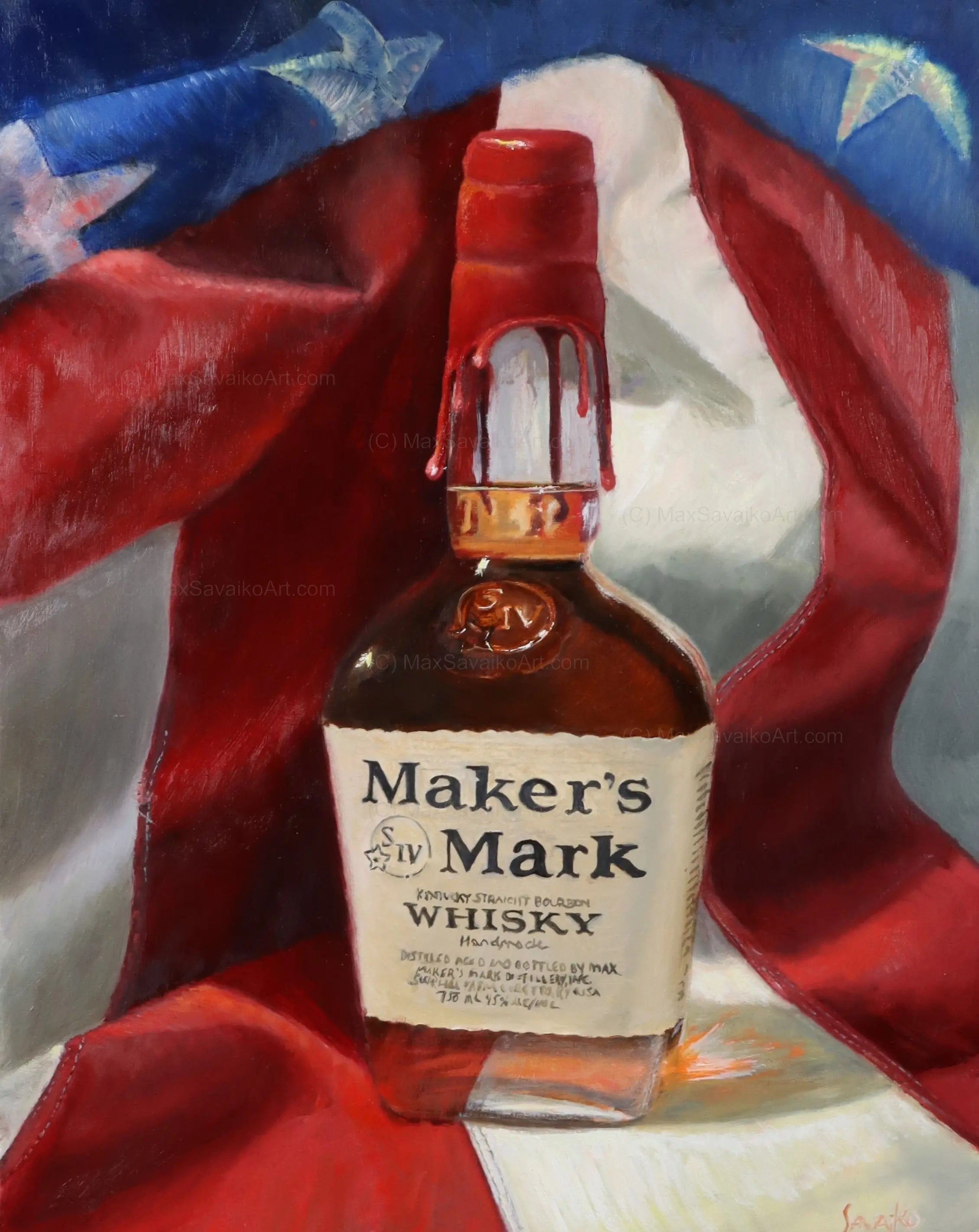Bourbon Art in Contemporary Culture: Where Tradition Meets Development
Bourbon Art in Contemporary Culture: Where Tradition Meets Development
Blog Article
The Significance of Whiskey Art in Celebrating Heritage and Workmanship in the Beverage Industry
The elaborate partnership in between whiskey art and the party of heritage and craftsmanship within the drink market can not be overemphasized. With thoughtfully created containers and tags, scotch brand names encapsulate their historic roots and the artisanal abilities that define their manufacturing methods.
The Historical Roots of Whiskey
At the heart of bourbon's appeal exists a rich tapestry of historical roots that trace back to old civilizations. The beginnings of whiskey can be connected to the purification techniques of the Sumerians and Babylonians around 2000 BCE, where early kinds of fermented grain drinks began to arise. However, it remained in the Middle Ages that the art of distillation advanced considerably, specifically in Ireland and Scotland, resulting in the development of bourbon as we understand it today.
The term "whiskey" itself stems from the Gaelic word "uisce beatha," meaning "water of life." This phrase highlights the social significance of whiskey in Celtic societies, where it was usually related to rituals, events, and common bonding. By the 15th century, purification came to be a recognized craft within monastic neighborhoods, leading the way for the facility of lawful distilleries.
As profession courses expanded, whiskey's popularity grew, transcending regional boundaries and catching the rate of interest of lovers worldwide. Realism Art. This historic trip mirrors not just the workmanship behind bourbon manufacturing yet additionally its indispensable duty in social and social contexts, noting it as a substantial drink throughout background
Artistic Expression in Branding
Scotch branding stands as a compelling crossway of artistry and commerce, where visual identification plays a crucial role fit customer assumption. The aesthetics of bourbon tags, product packaging, and advertising materials reflect not just the brand name's story but also its core worths and heritage. Via creative expression, distilleries communicate a narrative that reverberates with customers, evoking emotions and triggering links.
The use of shade, typography, and imagery in branding offers to distinguish products in a saturated market. For instance, conventional concepts may stimulate a sense of credibility and craftsmanship, while modern-day styles can signify technology and forward-thinking. This critical artistic instructions boosts brand recognition and commitment, allowing customers to forge a personal partnership with the whiskey they select.
Moreover, creative expression in branding usually serves as an event of regional heritage. Distilleries regularly include regional icons or historical recommendations right into their designs, producing a feeling of area that invites consumers to take part in a wider social experience. Ultimately, the creativity behind scotch branding not just enhances visual charm however additionally improves the overall narrative of the brand, cultivating a much deeper appreciation for the craftsmanship and heritage embedded in each bottle.
Craftsmanship in Container Layout
The virtuosity evident in whiskey branding extends beyond visual identity to include the workmanship associated with container layout. Each container works as a vessel not simply for the spirit within, yet additionally for the tale it outlines its top quality, beginning, and practice. The style process requires meticulous attention to information, as components such as form, product, and closure contribute considerably to the general perception of the whiskey.
Workmanship in container style involves selecting high-quality glass that can boost the bourbon's color and clarity, while additionally supplying a tactile experience for the consumer. The shape of the bottle should be both visually appealing and useful, commonly reflecting the heritage visit this page of the brand name. Lots of distilleries select unique forms or embossed logo designs that evoke a sense of credibility and history.
In addition, the label design and typography play a critical function in communicating the brand name's narrative. Realism Art. A well-crafted bottle not just mesmerizes the customer's eye however additionally strengthens the brand's commitment to quality and custom. By doing this, the workmanship of bottle style becomes a crucial aspect of the scotch experience, combining artistry with an extensive respect for heritage
Cultural Value of Scotch Art
Commemorating tradition and workmanship, the social importance of bourbon art transcends simple aesthetics, linking with the social and historic stories of the areas from which it learn the facts here now comes from. Each container acts as a canvas, portraying the one-of-a-kind stories, folklore, and customs that have actually shaped regional whiskey-making techniques. The elaborate layouts commonly mirror the heritage of the distillers, including symbols and concepts that resonate with the society and worths of their neighborhoods.

On top of that, whiskey art plays a crucial role in common gatherings and events, working as a tangible web link in between people and their shared experiences. By valuing the artistry in scotch product packaging, consumers cultivate a much deeper understanding and respect for the craft, eventually improving their enjoyment of the beverage itself.
Modern Trends in Scotch Discussion
In the last few years, the presentation of bourbon has developed to mirror modern tastes and patterns while still recognizing typical craftsmanship - Limited Edition. Distilleries are significantly concentrating on Limited Edition aesthetic aspects that boost the total drinking experience, bridging the space in between heritage and modernity
Cutting-edge container designs have emerged, typically including lasting products and artistic labels that tell compelling stories. Lots of brand names currently team up with neighborhood musicians, instilling their products with distinct visual expressions that resonate with consumers. Furthermore, limited-edition launches are usually packaged in collectible containers, including worth and appeal for connoisseurs.
Conclusion
To conclude, scotch art offers as an essential conduit for revealing the heritage and craftsmanship integral in the drink industry. Through elaborate branding, ingenious container layouts, and culturally significant artistic elements, whiskey brands successfully recognize their practices and attach with customers. This imaginative story not only elevates the appreciation of whiskey but also reinforces community identity and pride among producers. Ultimately, scotch art plays a crucial duty in preserving and celebrating the rich social tapestry of whiskey-making.


Craftsmanship in bottle layout entails choosing premium glass that can enhance the bourbon's shade and clearness, while also giving a responsive experience for the consumer. In this way, the workmanship of bottle design comes to be a crucial aspect of the bourbon experience, combining artistry with an extensive respect for heritage.
In conclusion, bourbon art serves as a vital channel for expressing the heritage and workmanship fundamental in the beverage market.
Report this page